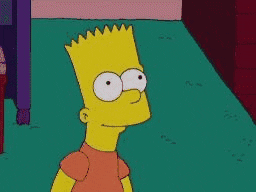<< Hide Menu
5.7 Introduction to Thinking and Problem Solving
4 min read•june 18, 2024
Dalia Savy
Sadiyya Holsey
Haseung Jun
Dalia Savy
Sadiyya Holsey
Haseung Jun
So, we just went over memory, but how do we actually think and problem solve? 🤔
Problem Solving
There are two different ways by which you could solve problems:
Algorithm
An algorithm is a step by step method that guarantees to solve a particular problem.
If you lost your phone📱, the algorithm might look like this:
- Remember where you put the phone last. If you don’t, go to the next step. ⤵️
- Retrace your steps. If you can’t, go to the next step.⤵️
- Call your phone to determine the location. Algorithms are process oriented 🔄
Heuristics
A heuristic is also known as a “rule of thumb.” Using heuristic is a quick way to solve a problem 💨, but is usually less effective than using an algorithm (more error prone). Heuristics also involve using trial and error ❌
An example of a heuristic would be trying to find the x value that makes this equal true: 3x+6=24. You might plug in multiple x values until you determine the x value that works.
Heuristics are the opposite of algorithms and are more result oriented. We use our mental set, schemas, prototypes, and concepts automatically when using heuristics.
Tip—When problem solving, think about algorithms as the long way and heuristics as the shortcut.
How would you solve 3x+6=24 using an algorithm?
Instead of using a heuristic and just plugging in answers till you find the right one, you could also solve this problem step by step using an algorithm. The steps may look like this:
- Subtract 6 on both sides: 3x=18
- Divide by 3 on both sides: x=6 You use a mixture of these two when taking a test and overall in everyday life activities🏃🍳.
Trial and Error
Trial and error is when you try to solve a problem multiple times using multiple methods. If you try to solve a problem one time using one method, the next time you solve it, you may use a different method. This process is repeated until a solution is reached.

Image Courtesy of Giphy.
How do we think?
Mental Set
A mental set is when individuals try to solve a problem the same way all the time because it has worked in the past. However, that doesn’t mean this problem solving method is applicable to the problem at hand or will work for other people. Having a mental set makes it harder to solve problems. Similarly, fixation is the inability to look at a problem with a different perspective.
Intuition
Intuition is colloquially known as a “gut feeling.” It is sensing something without a direct reason and basically an automatic thought💾
- When problem-solving and making difficult decisions, our brain intuits for us.
- As we learn and grow, our intuition does, too. Our learned associations surface as this gut feeling that we have because of how we know the world works around us 🌎
Insight
Insight was discovered by Wolfgang Kohler. It occurs when an individual has an all-of the sudden understanding when solving a problem or learning something. It's that light bulb💡 moment!

Image Courtesy of Giphy.
Inductive Reasoning
Reasoning from something specific to something general, which puts your thought into concepts and groups.
Fun Fact—Sherlock Holmes uses inductive reasoning.
Deductive Reasoning
Reasoning from something general to something specific. Think of mind-maps: you have one central idea in the middle (general) and then branch out into specific ideas.
These are usually more logical 🤔

Image Courtesy of Kristjan Pecanac.
🎨Creativity
Did you ever wonder how we get our creativity and to the extent to which it exists? Being creative is having the ability to produce ideas that are valuable. That's it; we're all creative in our own way.
There are five components of creativity 📸:
- Expertise—The more knowledge we have, the more ideas we build. Knowledge is the foundation of every idea that comes about.1. Generally, greater intelligence leads to a higher creativity 🎭 According to the threshold theory, a certain level of intelligence is necessary for creative work. However, it's not necessary sufficient, meaning other factors play in when it comes to creativity.
- Imaginative thinking skills—In order to be creative, you must be open-minded and see things in different ways. These skills also include being able to make connections and recognize patterns in ideas.
- A venturesome personality—Be willing to take risks, explore ideas, and try new things! 🧗
- Intrinsic Motivation—This is to be driven by your interests and the will to explore for your own satisfaction.
- A creative environment—All the above help fuel your creativity, but creativity can't exist without a supportive environment🌲 There are two different ways of thinking:
📝 Convergent Thinking
This is the more logical way of thinking, in which we narrow the solutions to a problem till we find the best one. Convergent thinking is used in IQ and intelligence tests.
💭 Divergent Thinking
The more creative way of thinking! You can think of this as brainstorming and diverging into different directions of thought. Rather than finding the best solution, divergent thinkers expand the number of solutions.
Divergent thinkers have a much easier time when problem solving since they have more of an open mind to trying different solutions.

© 2024 Fiveable Inc. All rights reserved.